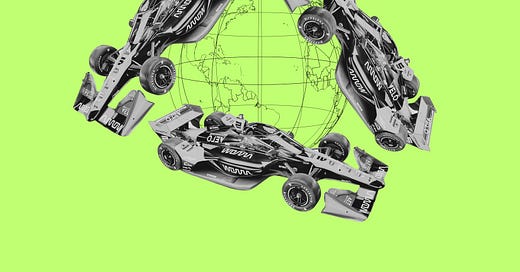What Do Trump’s “Liberation Day” Tariffs Mean For American Racing?
Driving in circles has always been an expensive business. It just got pricier.
Welcome to Formula Flash, where your local sports column meets Cosmo wrapped up in a newsletter delivered to your inbox via the cool girl next door (i.e. motorsport and enviro journo Olivia Hicks). It’s like “Drive to Survive” without the sensationalism!
If we really are entering into a recession, consider subscribing!
President Donald Trump announced a string of tariffs on Wednesday that target foreign imports. The trade war, which Trump is calling a “declaration of economic independence,” will impact everyday Americans who buy everything from Australian beef to Chinese brake pads.
Just seven weeks ago, a dot of MAGA red stood out on the Daytona International Speedway’s black tarmac. “From the roar of the engines on the track to the echo of ‘The Star-Spangled Banner’ soaring through the stands, the Daytona 500 is a timeless tribute to the speed, strength and unyielding spirit that make America great,” Trump declared. “That spirit is what will fuel America’s Golden Age, and if we harness it, the future is truly ours.”
However, slapping a tax on imported goods, specifically a 25 percent tariff on all foreign auto parts, threatens to do the opposite of Trump’s promise of bolstering the motorsport industry. The auto tariffs will cover more than $460 billion worth of imported vehicles and parts, according to Reuters.
As long as Americans have had cars, they’ve raced them. And while the automobile industry has been a throughline in national economic messaging from the start — encouraging a certain brand of the American Dream via 26-lane freeways and an emphasis on Detroit's American-made “Big Three” — today’s motor racing industry largely relies on strong trade agreements rather than the decay of diplomacy.
Keep reading with a 7-day free trial
Subscribe to Formula Flash to keep reading this post and get 7 days of free access to the full post archives.





